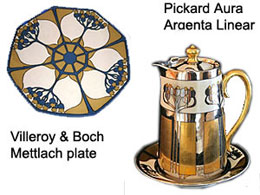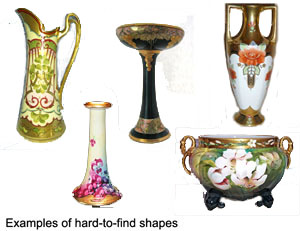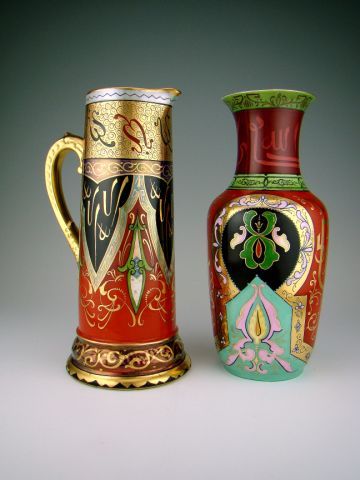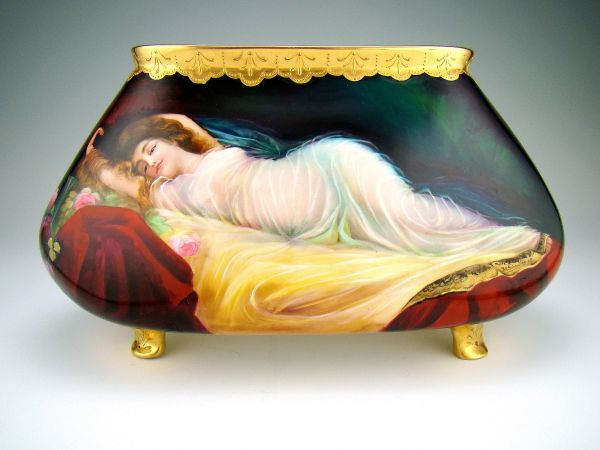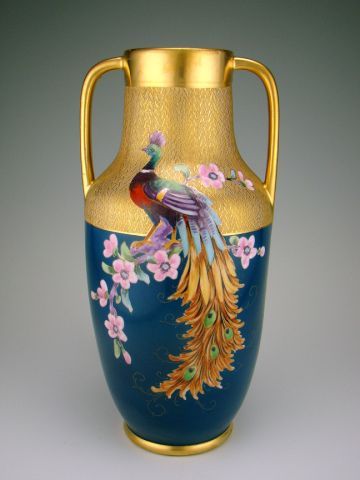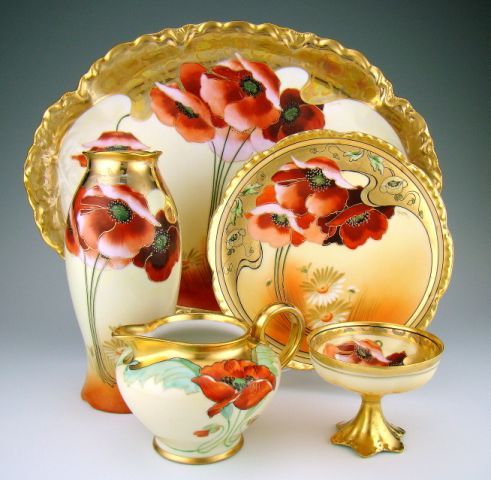Questions and Answers
| Q. Why are there often two maker’s marks on the reverse/bottom of Pickard pieces?
A. In addition to the Pickard decorator mark, often there is an under glaze mark of the producer of the blank. Sometimes the Pickard mark was applied over the under glaze mark to obscure identification of the producer of the blank. From the company’s beginning in the 1890s until 1935, Pickard was a decorating studio only; it purchased blanks from Limoges, Bavarian, Nippon, and American producers. In 1935, it began producing and decorating porcelain. Q. Where did the Pickard decorating designs come from? A. Many of the artists themselves developed their own patterns. Other designs came from similar items from factories in the old countries. For example, Aura Argenta Linear seems to have been a design “borrowed” from pottery Villeroy & Boch manufactured in Germany. Dutch Decoration appeared as a pattern in Keramic Studio, as did Metallic Grapes. Some of the Pickard designs were actually borrowed from popular paintings of the time. Q. What factors determine the value of a Pickard piece? A. The value of a Pickard piece is determined by a combination of factors and conditions. Among the primary considerations that would increase the value of a piece are:
There may be other market and general economic conditions that can impact the value of a Pickard piece as well. Q. Is a Pickard decorated piece more valuable than one decorated by contemporary studios such as Stouffer, Brauer, Donath, France, White’s Art Company or others? A. The Pickard identification on a piece will often be more desirable and command a higher price than a comparable piece from a competitor Chicago turn-of-the-century studio. However, each piece must be evaluated on its own merits using criteria such as discussed in response to the question on determining value of a Pickard piece above. It is also important to note that many Pickard artists also worked for Pickard competitor studios, and produced the same quality of work at each employer. Q. Is Pickard ALWAYS marked? A. This is a tough question to answer. Many times, one might see a piece that is assumed to be Pickard because of the decoration and /or the artist’s signature. Given that many of the artists also decorated porcelain at home to help make ends meet, there are many pieces that may look nearly identical to Pickard, but were not fired or produced in the Pickard Studio. Technically, therefore, it is not Pickard. If a piece does not have a Pickard mark on it, one cannot clearly establish that it is, in fact, Pickard. Of course, the first Pickard mark was a paper label. If a piece is signed by an early artist, it could have been a Pickard Studio piece. These pieces, however, would be very few in number. As long as a piece is judged by the criteria discussed in the previous questions, it may very well command “Pickard” prices. |
|
Many of your questions may be answered by reading Collector’s Encyclopedia of Pickard China, by Alan Reed.

